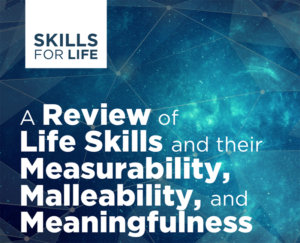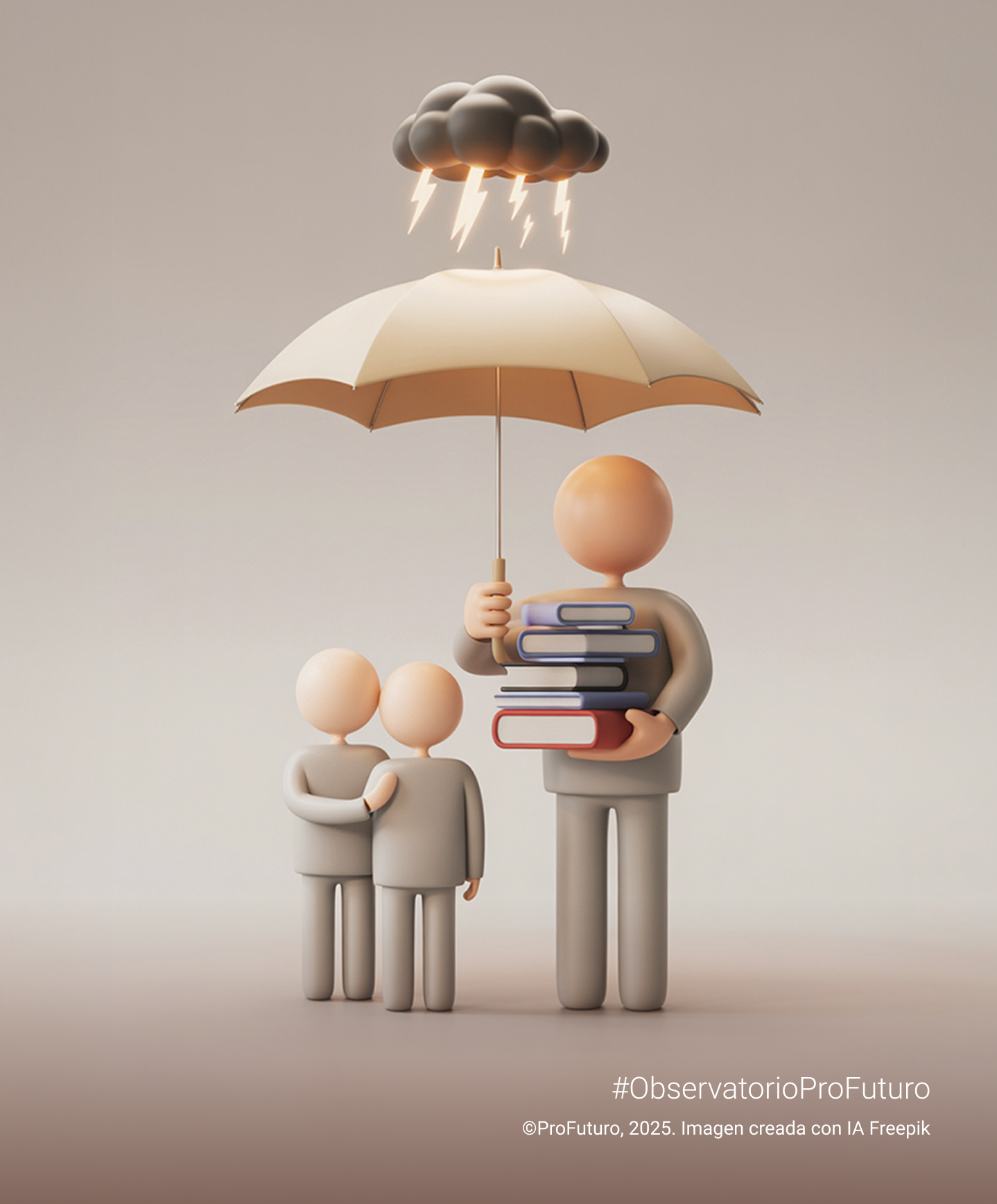We’re living in an age of infinite scrolling, constant WhatsApp pings, and notifications vying for a second of our attention. And it isn’t just at home—it’s in schools too. There, children and teenagers, over-stimulated and chronically distracted, try to survive school days that demand what no one has taught them: sustained attention, emotional regulation, presence.
Sadly, the symptoms no longer surprise: childhood stress, aggressive behaviour, poor performance, emotional exhaustion. Move too much in class and you’re labelled hyperactive. Don’t pay attention, and you’re punished or, at best, referred to the school psychologist. But the root problem—attention fragmented across a thousand distractions—rarely gets addressed.
What if teaching children how to pay attention were just as important as teaching them fractions or grammar? Mindfulness, or ‘full attention’, has travelled from Buddhist temples to Silicon Valley boardrooms, and from there into classrooms. And, as we’ll see, bringing it into education is backed by evidence.

Defined as “the act of paying deliberate, non-judgemental attention to the present moment,” mindfulness has become an educational tool grounded in solid empirical evidence. According to the Skills for Life report from the Inter-American Development Bank, it ranks among the top ten competencies that most significantly impact personal well-being, self-regulation, and learning capacity. It’s not a trend: it’s a measurable, teachable skill that positively affects anxiety levels, academic performance, and classroom relationships.
These aren’t just international reports talking. In an experimental study with primary-school pupils in Mexico, after ten weeks of systematic practice there were significant improvements in emotional regulation, selective attention and body awareness, alongside a notable drop in impulsivity.
What mindfulness really is, and why we should care
The term, elegant in English, translates into Spanish far more directly: atención plena. Be here, now, without judgement. It really is as simple—and as tough—as that.
Jon Kabat-Zinn, a leading proponent, defines it as “paying attention, intentionally, to the present moment, without judgement.” It’s not about clearing the mind, entering a trance, or sitting in lotus position during a maths lesson. It means observing what’s happening—in the body, the thoughts, the surroundings—without automatic reactions, with openness, curiosity, even kindness.
Contemporary psychology frames it as a complex skill consisting of clear components: attentional self-regulation (knowing where your attention is and bringing it back when it drifts); awareness without reaction (observing instead of acting impulsively); and an orientation towards experience rooted in self-acceptance, compassion and understanding that thoughts aren’t facts and emotions aren’t enemies. In other words, education for awareness.
What sets mindfulness apart from traditional meditation or relaxation techniques is its educational intent and everyday application. It doesn’t try to avoid discomfort, but to face it head-on. It’s not about teaching kids to be quiet so they won’t disrupt. It’s about giving them the tools to understand and manage what’s going on inside them. Essentially, it’s teaching presence.
According to the IDB report, this matters immensely in childhood and adolescence—those years when cognitive pathways and emotional habits are forming the infrastructure of our lives. Teaching mindfulness early isn’t a quirky wrinkle of modern education—it’s an investment in mental health, enduring learning and better coexistence.
What the evidence shows: real benefits both in and beyond the classroom
Mindfulness is supported by data and evidence. In the most exhaustive analysis to date of life skills, coordinated by the Inter-American Development Bank, mindfulness was the only skill scoring a perfect 20 out of 20 in three crucial categories: measurability, malleability and meaningfulness.
In short: you can measure it, teach it reliably, and it demonstrably improves lives. That’s a big deal.
And what does it actually improve? Nearly everything that’s failing in schools.
A meta-analysis cited by the IDB shows that regular mindfulness practice among students enhances sustained attention, working memory and academic performance. And that’s just the start. Significant reductions in stress, anxiety, impulsivity, and interpersonal conflict have also been documented. Students practising mindfulness become less reactive, better at regulating emotions, and display higher levels of empathy and understanding.
But this impact isn’t confined to pupils. Teachers benefit as well. In real-world studies, educators who incorporate mindfulness report lower emotional burnout, a stronger sense of connection with their students, and a noticeably improved classroom atmosphere. It doesn’t transform the class into a zen retreat—but conflicts drop and relationships improve. And in educational terms, that’s gold.
Moreover, the IDB emphasises that mindfulness has a particularly powerful impact in high-vulnerability environments. Where toxic stress—ongoing strain not switched off with a phone—directly affects children’s brain and emotional development. In such contexts, mindfulness acts as a biological counterweight: reducing nervous-system overactivation, bolstering resilience and giving students concrete tools to avoid falling into survival mode.
What sets mindfulness apart from traditional meditation or relaxation techniques is its educational intent and everyday application.
What the evidence shows: real benefits both in and beyond the classroom
Mindfulness is supported by data and evidence. In the most exhaustive analysis to date of life skills, coordinated by the Inter-American Development Bank, mindfulness was the only skill scoring a perfect 20 out of 20 in three crucial categories: measurability, malleability and meaningfulness.
In short: you can measure it, teach it reliably, and it demonstrably improves lives. That’s a big deal.
And what does it actually improve? Nearly everything that’s failing in schools.
A meta-analysis cited by the IDB shows that regular mindfulness practice among students enhances sustained attention, working memory and academic performance. And that’s just the start. Significant reductions in stress, anxiety, impulsivity, and interpersonal conflict have also been documented. Students practising mindfulness become less reactive, better at regulating emotions, and display higher levels of empathy and understanding.
But this impact isn’t confined to pupils. Teachers benefit as well. In real-world studies, educators who incorporate mindfulness report lower emotional burnout, a stronger sense of connection with their students, and a noticeably improved classroom atmosphere. It doesn’t transform the class into a zen retreat—but conflicts drop and relationships improve. And in educational terms, that’s gold.
Moreover, the IDB emphasises that mindfulness has a particularly powerful impact in high-vulnerability environments. Where toxic stress—ongoing strain not switched off with a phone—directly affects children’s brain and emotional development. In such contexts, mindfulness acts as a biological counterweight: reducing nervous-system overactivation, bolstering resilience and giving students concrete tools to avoid falling into survival mode.
How to bring mindfulness into the classroom: practices, conditions and challenges
First off, you don’t have to be a Buddhist monk or have completed a retreat in the Himalayas to teach mindfulness at school. And you don’t need to incense the classroom or shut eyes for half an hour. What matters is knowing what you’re doing, having intention, and being consistent.
Many practices are possible, fitting every educational stage. Classic breathing exercises (observing the breath without trying to change it), body scans (mentally noting sensations), focused-attention tasks (listening to a sound until it fades, counting breaths, tracking an object with your eyes), mindful pauses (pausing before transitioning), even active listening—rare but powerful in schools.
The key is to weave these into the existing day—not add another subject. Make use of tutor time, class transitions, the five minutes before break, the end of the day.
And when doubts arise, there are proven models to point to:
- MindUP, tested in Canadian primary schools: daily brief practices (breathing when a bell rings, moments of gratitude) plus weekly lessons. Studies show improved social skills, reduced stress and better academic outcomes (Schonert-Reichl & Lawlor, 2010).
- Learning to BREATHE, created by Patricia Broderick for teenagers: six modules over eleven weekly sessions. Used with at-risk adolescents, it delivered significant reductions in anxiety and depression, plus gains in emotional regulation and self-awareness.
According to the IDB, these programmes work when they meet three conditions: continuity, active teacher involvement, and student-centred experiential practices. Recommended format? 8–12 weeks, sessions of 10–20 minutes, 2–3 times a week—enough to create measurable shifts in attention, behaviour and emotional control.
None of this works without teachers embodying the practice. You don’t need to be serene, but you do need some personal experience. A teacher who can pause, breathe, avoid a knee-jerk reaction—that’s already teaching. Role modelling matters more than rigid scripts.
A host of resources is now freely available: Smiling Mind, MindUP, and Latin American adaptations that integrate local culture, translate materials, and train teachers regionally. The IDB notes that such resources can make mindfulness realistic even in busy curricula, with countries like Uruguay and Chile taking steps to include it in wellbeing policies.
Still, it’s not easy. Cultural resistance (some might dismiss it as trendiness), packed timetables, and limited teacher training all derail efforts. And the biggest misunderstanding? Thinking mindfulness is just a “calm-down” tool for misbehaving kids. It isn’t. It’s an invitation to observe inner life—not control it. Using it as discipline strips it of meaning.
Teaching mindfulness isn’t about extinguishing fires, it’s about avoiding the spark. Not about avoiding chaos, but about learning to live through it. And as the IDB reminds us, it doesn’t require teachers to become meditation experts—it simply calls for them to be present, aware guides in a classroom that demands humanity.
Educating attention to educate the future
We live in an intensely noisy world, where everything jostles for our attention: chasing ads, relentless social networks, algorithms that know us better than we know ourselves… and yes, schools included. Amid the clatter, teaching people how to pay attention isn’t just helpful—it matters deeply.
Mindfulness might sound modern, but its origins run deep. It’s a grounded, evidence-based practice that enhances life both in and out of school. It won’t fix every problem, but it does hit at the heart of many: our disconnection from ourselves, our emotional reactivity, our struggle to stay present in a world that constantly drags us away.
Teaching mindfulness shapes students who are more self-aware, more autonomous, better able to choose how to respond to what they think and feel. And sure, it helps teachers too—making them calmer, clearer, less consumed by urgency.
Who knows? Maybe the future of education isn’t about speeding up learning. Maybe it’s about learning to slow down: to stop, to listen, to hear. Not to stay still, but to move differently. With less hurry. With more meaning.






